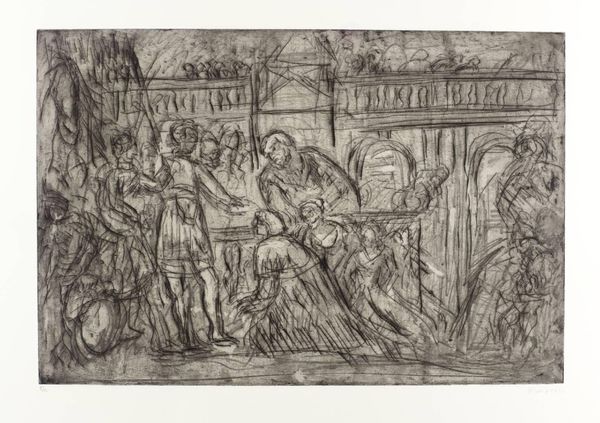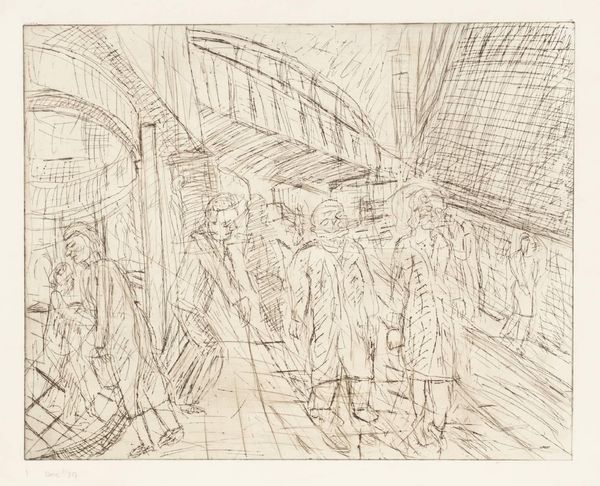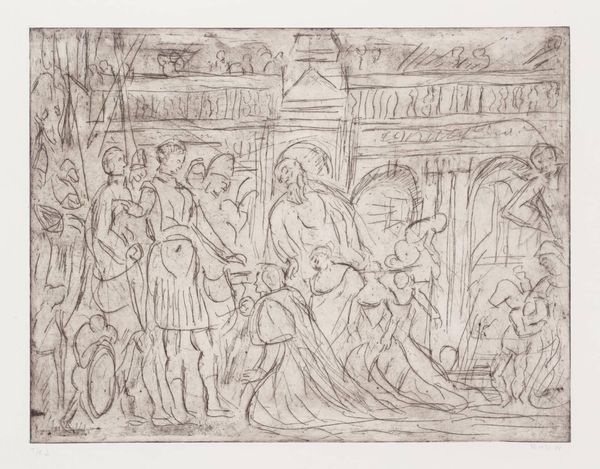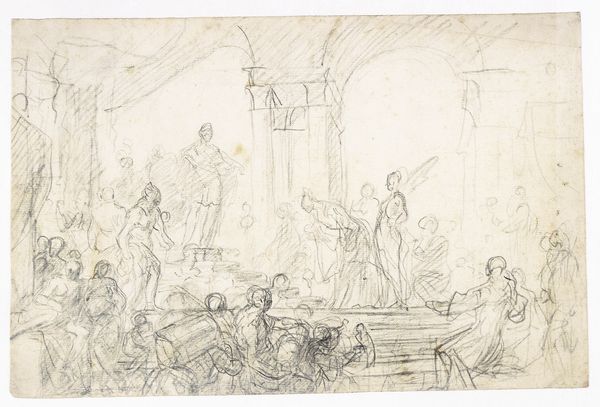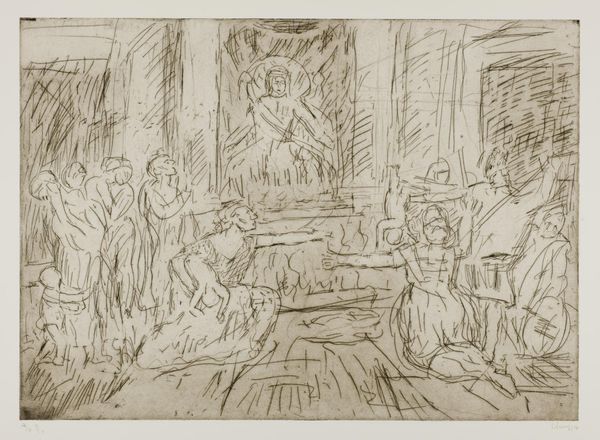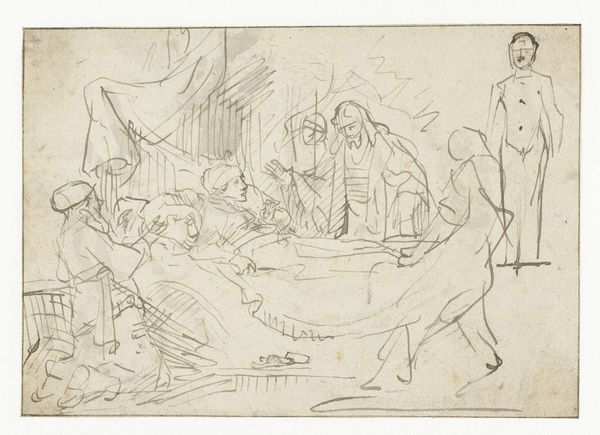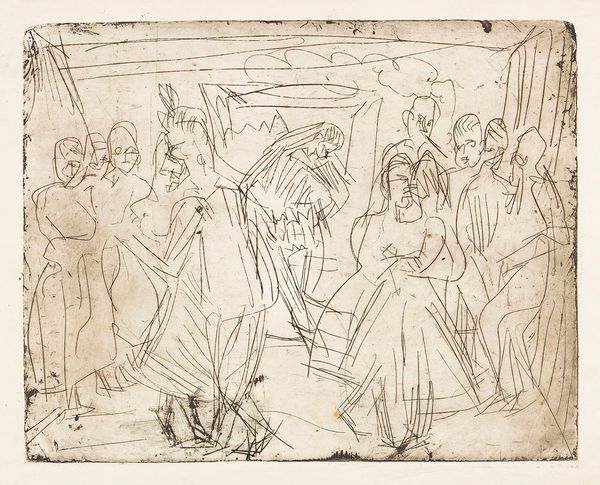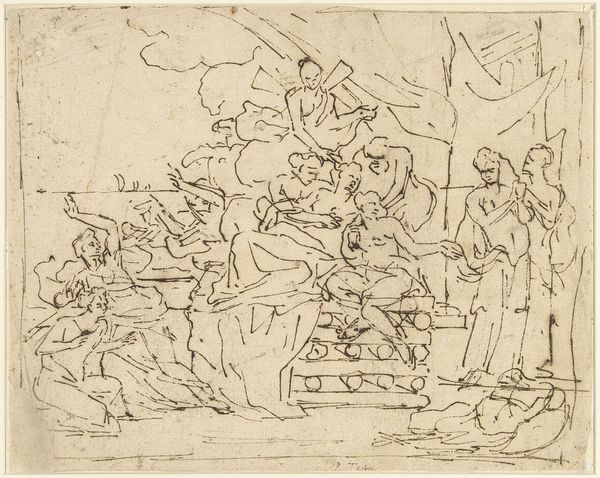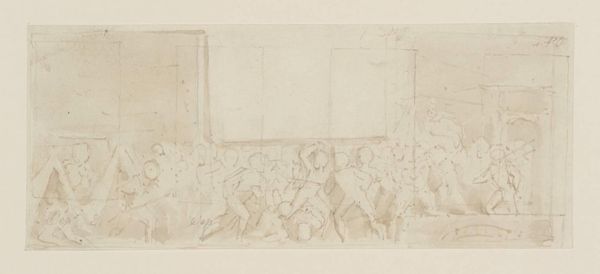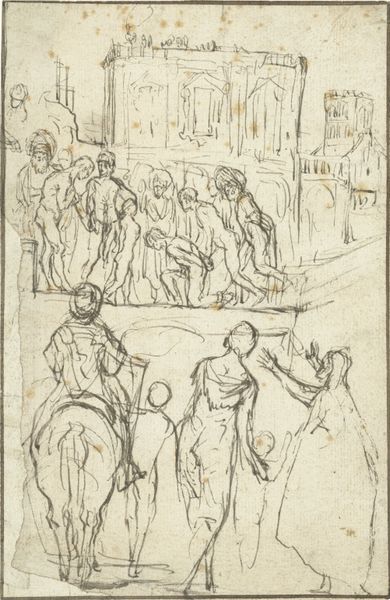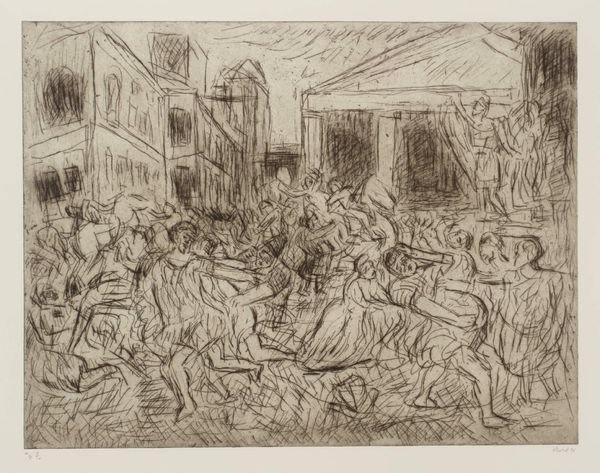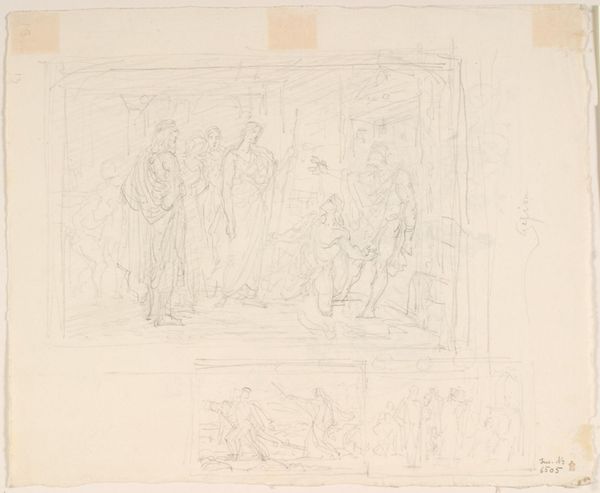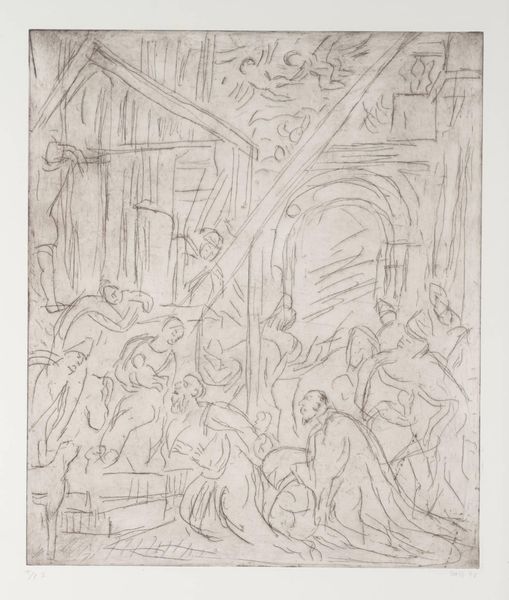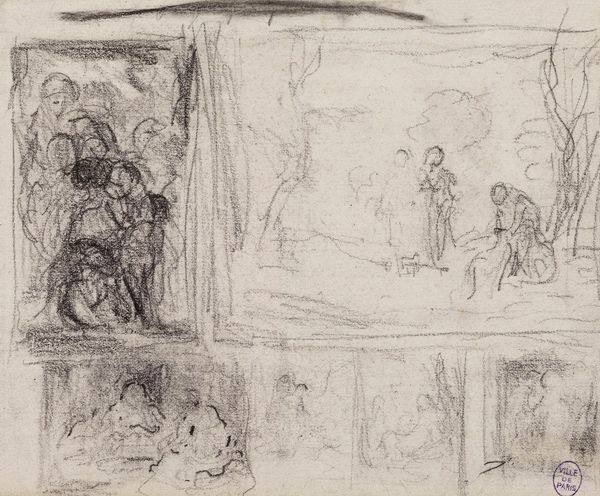
Copyright: © Leon Kossoff | CC-BY-NC-ND 4.0 DEED, Photo: Tate
Curator: Looking at Leon Kossoff's "The Family of Darius before Alexander," it immediately strikes me as a scene teeming with emotion and movement. Editor: The chaotic lines and almost frantic energy do portray a powerful sense of turmoil. It’s like witnessing a pivotal historical drama unfolding. Curator: Indeed. Kossoff, though working much later, echoes the grandeur of history painting. We see echoes of classical themes reinterpreted through his distinctive modern lens. The image suggests themes of subjugation and mercy, a common thread throughout history. Editor: I notice the subtle use of archways and figures in procession. The arch symbolizes transition and the figures hint at a narrative of power dynamics. There is a deeper psychological interplay at play. Curator: Absolutely. Kossoff's raw application mirrors the intense social and political realities he lived through, thus imbuing it with a contemporary resonance. Editor: It's fascinating how such a seemingly simple sketch can evoke such complex layers of historical and emotional depth.
Comments
tate 7 months ago
⋮
http://www.tate.org.uk/art/artworks/kossoff-the-family-of-darius-before-alexander-1-p11715
Join the conversation
Join millions of artists and users on Artera today and experience the ultimate creative platform.
tate 7 months ago
⋮
This print is one of many etchings executed by Leon Kossoff in response to, and literally in the presence of, oil paintings by old masters; in this case The Family of Darius before Alexander, 1565-70, by Paulo Veronese (c.1528-1588), owned by the National Gallery, London. Tate owns three prints by Kossoff after this Veronese painting (Tate P11715-17). The artist’s ability to explore a number of separate responses while making drawings and prints from a single subject is illustrated in these etchings. This print was never published as an edition; Tate owns the second trial proof.
